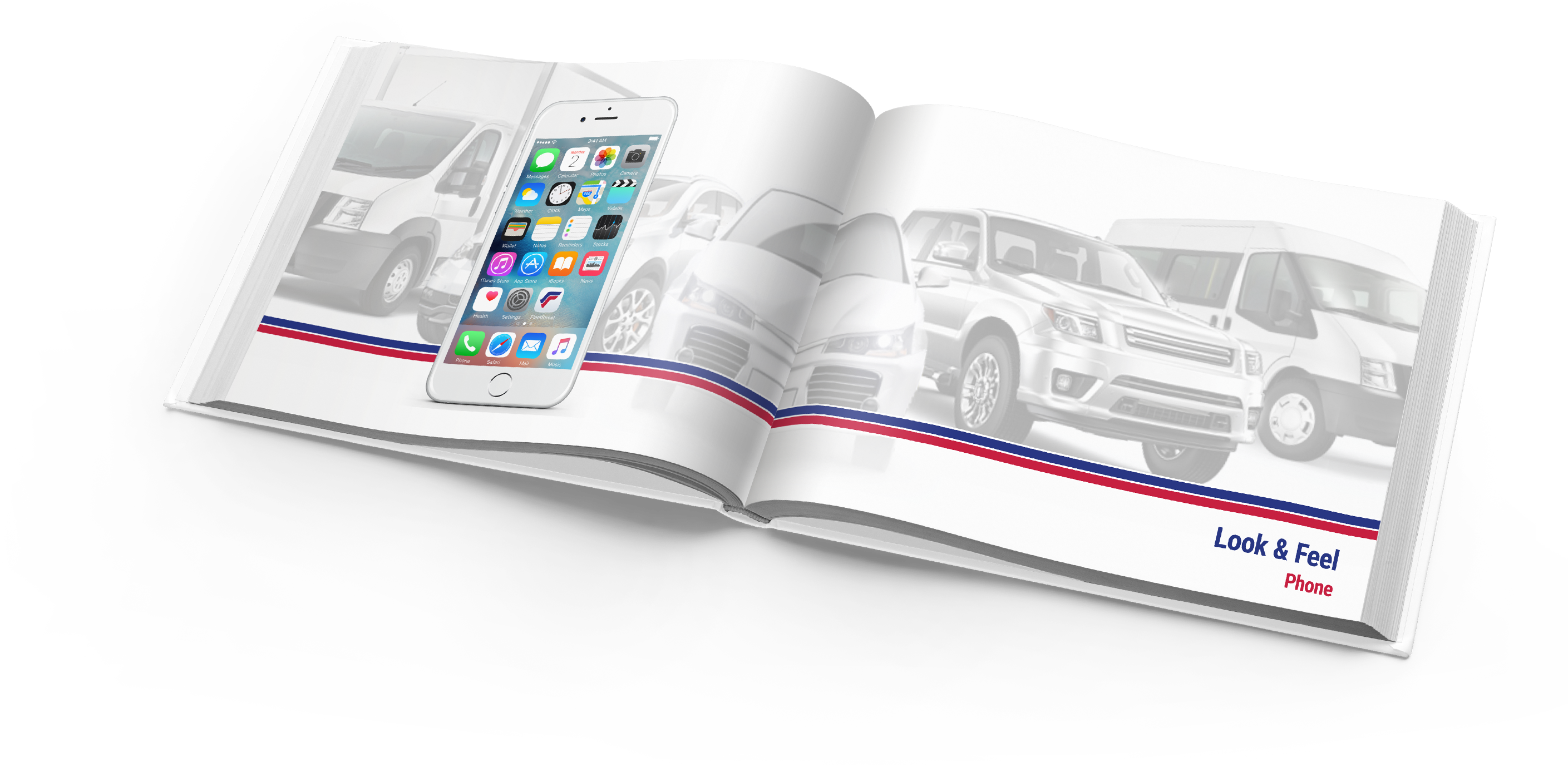Fleet Vehicle Inspection App
Fleet Street, a startup vehicle remarketing company, identified an opportunity in how corporate fleet vehicles were being handled at end-of-lease. The industry standard relied on handwritten driver notes without photos, requiring dealerships to perform multiple redundant evaluations before vehicles could be priced and listed for sale. This inefficiency meant companies missed opportunities to sell directly to drivers and faced delays getting vehicles to market. Fleet Street needed a mobile solution from day one that could streamline inspections, provide instant valuations, and generate marketplace listings automatically, creating a competitive advantage in the fleet remarketing space.
As senior designer at Haneke Design, I led all UX/UI design work for this 5-6 month project, working directly with Fleet Street's founder to define requirements and coordinating with iOS and Android developers through build reviews and QA testing.
The Challenge
Fleet managers had limited visibility into their fleet vehicle conditions at end-of-lease. Drivers provided inconsistent handwritten notes — if they provided any feedback at all — and no photos were captured during the return process. This meant vehicles had to be physically evaluated multiple times: once to determine value for potential driver purchase, and again by dealerships to price and photograph for online listings.
The lack of upfront data prevented Fleet Street from making immediate purchase offers to drivers, forcing them to send all vehicles through dealerships and missing opportunities for direct sales.
Problem Statement
Without standardized vehicle condition data and photos at the point of return, Fleet Street couldn't efficiently evaluate vehicles, make timely purchase offers to drivers, or quickly list vehicles for resale, resulting in duplicative effort and lost revenue opportunities.
Goals
Before diving into design, we needed to clearly define what success would look like:
Streamline Vehicle Evaluations
Guide drivers through a structured inspection process that captures consistent, complete condition data.
Eliminate Redundant Work
Capture photos and details once during driver inspection, eliminating the need for multiple subsequent evaluations.
Enable Instant Valuations
Provide enough accurate data to generate immediate purchase offers to drivers and automate marketplace listings.
Make It Driver-Friendly
Create an intuitive experience that drivers could complete in under 15 minutes without training.
Technical Requirements & Challenges
The app needed to handle several technical requirements that shaped the design:
VIN Scanning & Vehicle Lookup
The camera would scan the Vehicle Identification Number barcode, then perform a database lookup to auto-populate vehicle details. This was initially uncertain from a technical feasibility standpoint, so I designed with a fallback manual entry field. Working with developers, we identified barcode scanning libraries and integrated with a third-party VIN lookup service.
Vehicle Imagery
To confirm the correct vehicle was identified, we needed to show car photos after VIN lookup. I coordinated sourcing a vehicle image API and designed fallback states using generic stock photos (white sedans, trucks, vans) for when specific makes/models weren't available or the service was unavailable.
Guided Photo Capture
The app needed to walk drivers through capturing specific interior and exterior angles to ensure consistent, complete photo documentation for valuations and listings.

Design Process
With clear requirements and technical constraints defined, I mapped out the complete user flow for the MVP. The app would guide drivers through each step sequentially to ensure ease of use and valid reporting data: 1Scan or enter VIN 2Confirm vehicle details with photo 3Answer guided questions about vehicle condition and damage 4Complete structured photo documentation (exterior & interior) 5Submit for automated valuation
Wireframing & Prototyping
I built wireframes in Sketch using reusable component symbols for all UI elements. This modular approach meant that once layouts were approved, I could apply Fleet Street's brand colors, typography, and styling globally by updating the master components. Wireframes transformed into high-fidelity designs in less than a day.
Wireframe: VIN scanner
Wireframe: Vehicle confirmation
Wireframe: Driver confirmation
Wireframe: Vehicle evaluation form (part 1)
Wireframe: Vehicle evaluation form (part 2)
Wireframe: Vehicle evaluation form (part 3)
Wireframe: Guided exterior vehicle photos
Wireframe: Guided vehicle photos (viewfinder)
Wireframe: Guided interior vehicle photos
Wireframe: Guided interior vehicle photos (viewfinder)
Wireframe: Evaluation confirmation
The prototype linkages in InVision remained intact throughout this process, so the low-fidelity clickable prototype seamlessly became a high-fidelity prototype without rebuilding interactions.
VIN scanner
Vehicle confirmation
Driver confirmation
Vehicle evaluation form (part 1)
Vehicle evaluation form (part 2)
Vehicle evaluation form (part 3)
Guided exterior vehicle photos
Guided vehicle photos (viewfinder)
Guided interior vehicle photos
Guided interior vehicle photos (viewfinder)
Evaluation confirmation
As a unique leave-behind, our agency provided Fleet Street with a hardcover, printed design guide to commemorate the design phase. This book included key UX artifacts — user flows, wireframes, high-fidelity designs, and UI specifications — serving as both a reference document and a polished, professional showcase of the work. While developers primarily relied on Zeplin for technical specs and design handoff, the printed book was a thoughtful way to document the project and reinforce the client's investment in a well-crafted user experience.

Development & QA
I handed off designs to iOS and Android developers and remained involved throughout the build phase, conducting regular build reviews and QA testing. I personally tested the VIN scanning functionality on my own vehicle to validate the barcode reading and lookup process worked as designed.
Impact
The Fleet Vehicle Inspection App launched successfully, providing a standardized process for evaluating end-of-lease fleet vehicles. The guided inspection flow took approximately 10 minutes to complete and captured all necessary condition data and photos in a single session.
By eliminating redundant evaluations and enabling automated vehicle valuations, Fleet Street could make immediate purchase offers to drivers and generate marketplace listings without additional manual work. While I transitioned off the project before post-launch metrics were available, the foundation we built addressed the core inefficiencies in their vehicle remarketing process.




